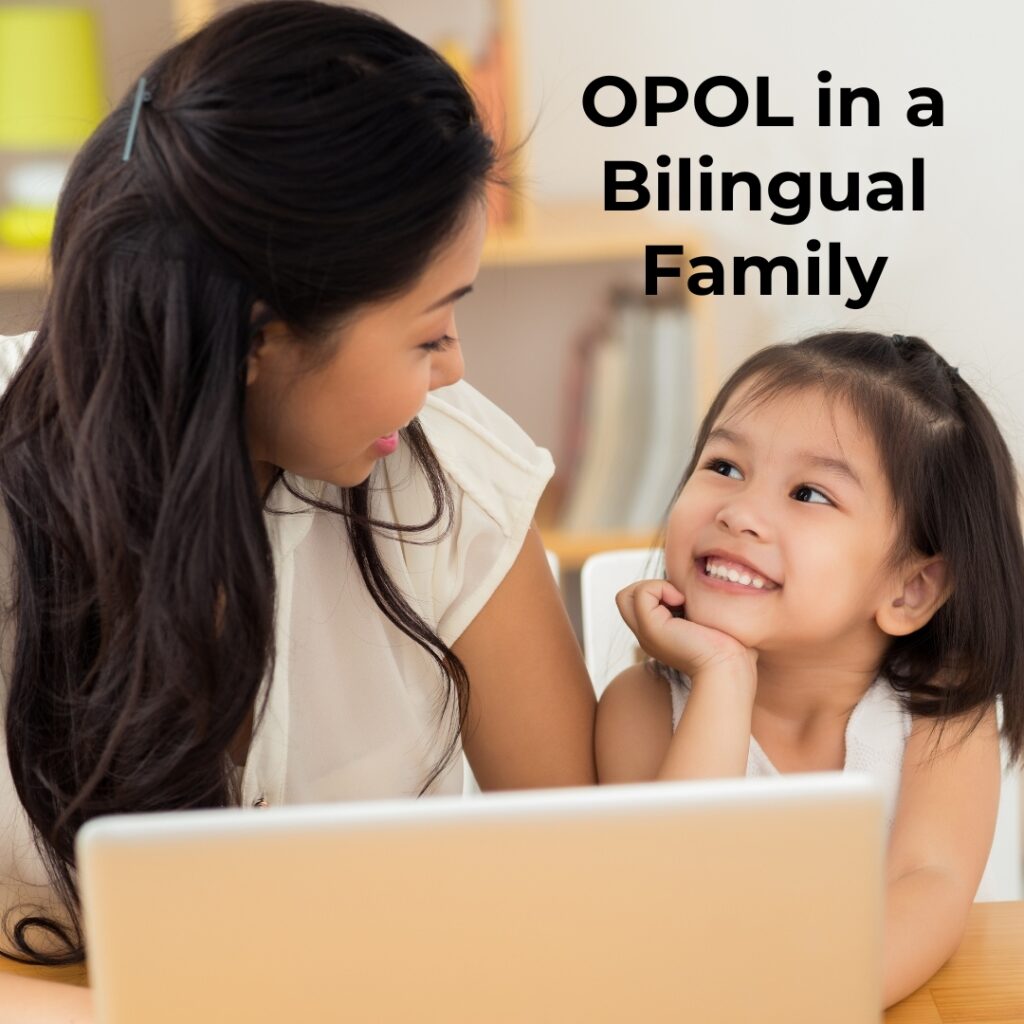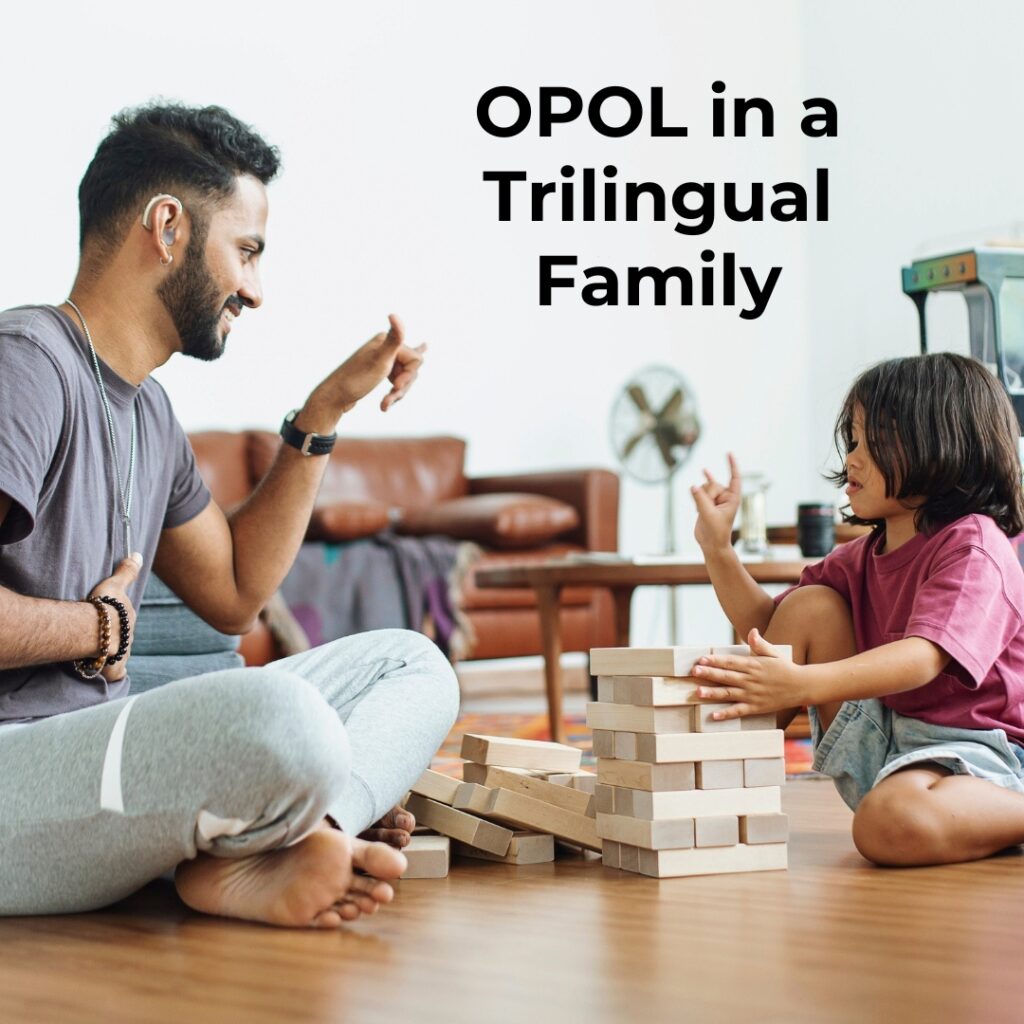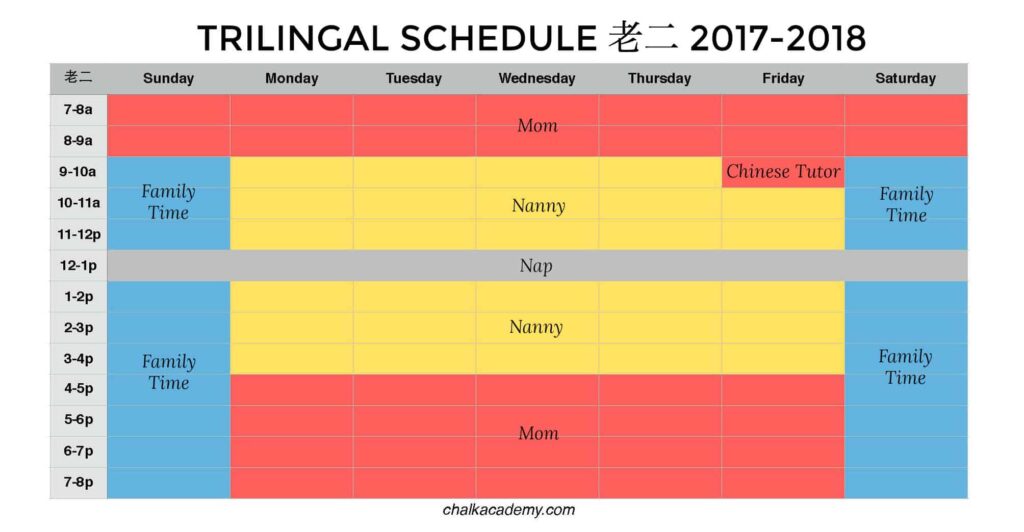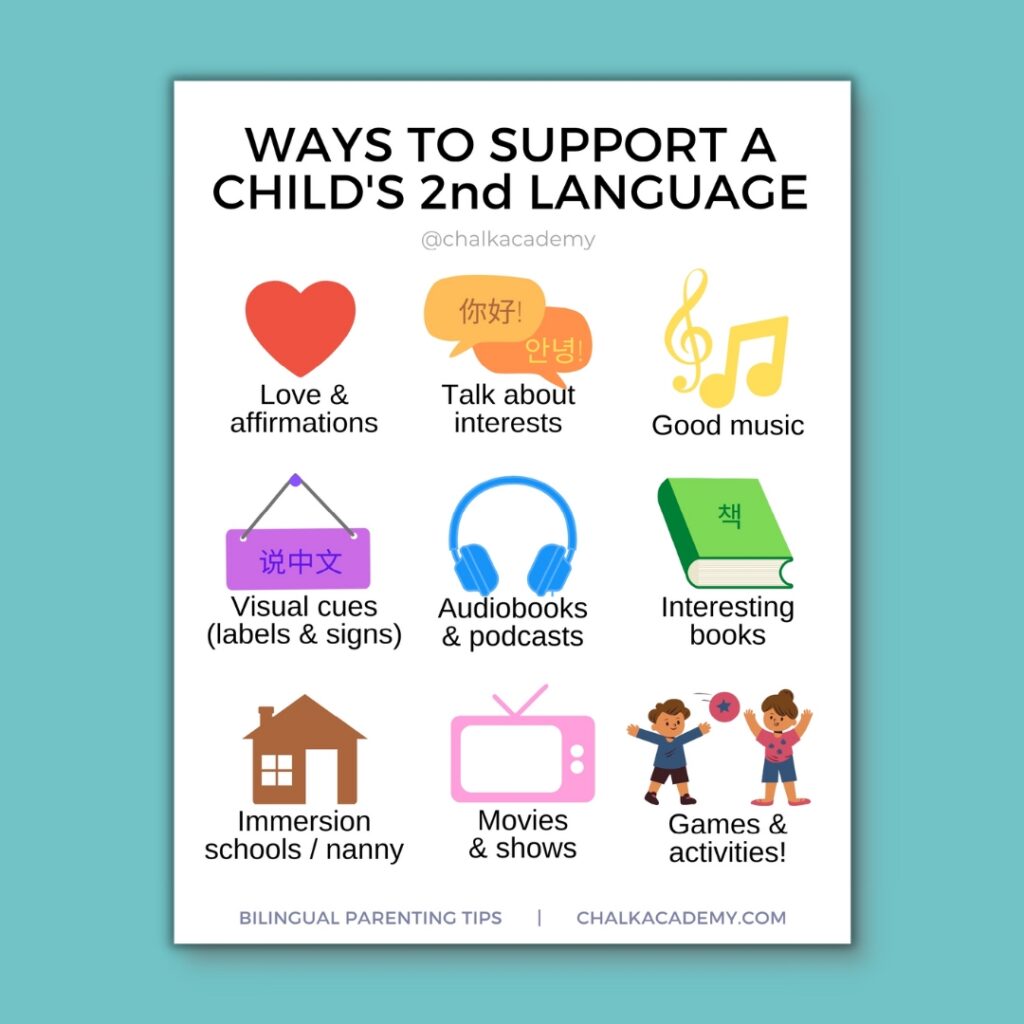How the Popular OPOL Method Works (and How it Doesn’t)

OPOL stands for “One Person One Language” or “One Parent One Language”. It’s a popular strategy for parents raising multilingual children. In the past, my husband and I have used the OPOL method to raise our kids bilingual (and previously trilingual). I’ll explain how OPOL works with real-life examples in bilingual, trilingual, and other multilingual family scenarios.
It’s also important to have realistic expectations of the One Person One Language method. OPOL pros and cons are addressed here as well.
What is the OPOL method or One Person One Language strategy?
OPOL is just what it sounds like. One person speaks one language exclusively, with “person” being a parent, nanny, babysitter, grandparent, or other caregiver.
Each person uses their designated language at home or while they are out and about.
Can a child learn more than one language if only one parent speaks it?
Yes! At the bare minimum, one parent or person is needed to pass on more than one language to a child.
The effectiveness of the OPOL method depends on several factors. As linguistics expert Barbara Pearson advises, “The key to raising childhood bilinguals is securing and establishing the minority language.”
If a child has regular interactions and strong connections with a caregiver, then they are more likely to learn the minority language. In other words, the primary caregiver, such as a nanny or work-at-home parent, can have a significant influence in passing on the minority language. The dominant language will inevitably be acquired from the community.
In addition to each person talking consistently in one language, caregivers can use music, books, shows, and other media in the designated language. These multi-sensory resources create an immersive experience in the minority language.
Lastly, even when parents speak different languages, all family members should encourage the minority language.
How does the OPOL method work in a bilingual family?
One parent or caregiver speaks one language (Language A) exclusively while the other speaks another language (Language B). Through this method, the child is exposed to 2 languages.

Example in a bilingual family: Mom speaks Mandarin Chinese while Dad speaks English. As such, the child learns to respond to Mom in Mandarin Chinese and Dad in English.
To create an immersive environment, Mom can use media to boost language exposure for the child. Together, they can read Chinese children’s books, watch Mandarin cartoons, and play with Chinese LEGO sets.
How does the OPOL method work in a trilingual family?
In a trilingual family, the OPOL strategy often involves one person speaking Language A, the other parent speaking Language B, and a caregiver speaking Language C.

Example in a trilingual family: Mom speaks English; Dad speaks Korean. Grandma comes when the parents are working and speaks Hindi. As a result, the child learns to respond to each caregiver in the associated language.
In this case, when the child is with Dad, he might sing Korean children’s songs, and play with Korean alphabet toys. Dad may spend his free time searching Korean bookstores for fun books.
In a trilingual family, the OPOL method can also involve one person speaking Language A, another person speaking Language B, and the community or school providing immersion in Language C.
Example: Mom speaks French, Grandpa speaks Greek, and the child learns English from teachers and friends at preschool.
What are the benefits of the OPOL method?
When the parent or caregiver is consistent with the One Person One Language method, the child begins to associate the person with the language.
With time, meaningful interaction, and consistent immersion, a child can learn to think and respond in that language with that person.
In other words, the OPOL strategy creates a language relationship between parent and child. This is particularly true when a multilingual baby or child spends most of their time at home.
What are the downsides of the OPOL method?
Parents often struggle to be consistent about speaking the minority language. Each person may feel stressed about slipping into the “wrong” dialect.
In a study exploring bilingual parenting strategies and language beliefs, linguist Sarah Wilson found the OPOL method to be unsustainable for many families due to the significant effort required by individual parents.
When a child grows up, the One Parent One Language method may be less feasible, too.
As psychologist Francois Grosjean explains, “Since exposure to the two languages is rarely equal, especially when the child starts interacting with the outside world, the language with less input, often the minority language, suffers.”
When children become verbal, they decide which language to speak to family, friends, and other members of the community. Sticking to one assigned vernacular is usually impossible when all variables are considered.
Example of a One Person One Language schedule
When my children were younger, we used the OPOL method for their first few years at home.
- Our family’s 3 languages were English, Chinese, and Korean.
- English was the dominant language for all caregivers as well as our community in California.
- My husband always spoke English; I was the person responsible for teaching our kids Chinese; and our nanny spearheaded the Korean exposure.
Out of curiosity, I tracked our family’s language exposure for a few years. Here’s a visual breakdown of our One Person One Language schedule during the week. The color-coding indicates which language was used most often during a block of time. This was largely impacted by which parent or caregiver was with our kids.

Older child 老大 had ~91 waking hours per week
- Red = Chinese = 35 hours (38%)
- Blue = English = 37 hours (41%)
- Yellow = Korean = 19 hours (21%)

Younger child 老二 had ~84 waking hours
- Red = Chinese = 35 hours (42%)
- Blue = English = 20 hours (24%)
- Yellow = Korean = 29 hours (34%)
For simplification purposes, this table excludes variations like weekends when my husband or I would be working.
During this period, my older child had the least exposure to Korean. As expected, this was her least fluent language.
Although my younger child heard English the least, he has always had a strong bond with my husband. In this case, quality trumped quantity. Their adventures with playing cars and throwing balls led to rapid English preference.
What language should bilingual parents speak for the OPOL method to work?
The ideal language depends on the parent’s connection to the language, the dominant language in the community, and available resources for the language.
Example: Bilingual parent in an English-speaking country
- Parent A’s native heritage language is Spanish but he is also fluent in English and German. He is raising a child in Canada.
- For emotional reasons, he may favor speaking Spanish to his children with the “One Person One Language” method.
- His children will likely learn English from school and the community.
What if one parent is not fluent in their assigned language?
Ideally, each caregiver would speak the language they are most comfortable with. However, the One Parent One Language method can work for non-fluent parents.
If one parent is not fluent, they can use the language to the extent of their ability. A parent can teach a child what they know while continuing to learn and improve their language skills.
Read: How I’m Learning Chinese as a Busy Parent: Speaking, Reading, Writing
What if one parent is not comfortable using the OPOL method?
Open communication between parents is essential. If a parent is uncomfortable with the “One Person One Language” method, it’s important to discuss concerns and explore alternative bilingual parenting strategies.
Sometimes, a new approach to teaching minority languages can make a big difference. Caregivers should re-evaluate long-term goals and brainstorm ways to make the experience fun for the family.
Can parents start with the OPOL method and switch to another?
Of course! Life happens.

For many families, the One Parent One Language method is an excellent starting point for building language habits and relationships.
However, with changes in work, location, school, family structure, and caregivers, parents often need to switch the OPOL method to another multilingual plan.
It’s important to be flexible and responsive to your child’s language development and your family’s needs.
What can bilingual families do besides the OPOL method?
Good news – there are lots of great ways to raise a bilingual or multilingual child. If the OPOL method isn’t working, here are other language strategies:
- Minority Language at Home: One language (usually the minority language) is designated as the primary language spoken at home, while the community language is used outside the home.
- Time and Place Method: Specific languages are used at designated times or in specific places. For example, one language might be spoken during meals, while another is used during playtime.
- Mixed Language Strategy: Caregivers speak multiple languages to the child, encouraging a mix of languages in the household. This can help the child become fluent in multiple languages simultaneously.
Example: Switching methods from One Parent One Language to Minority Language at Home
- Family living in Italy: Parent A is a native Italian speaker but also fluent in English. Parent B, the primary caregiver, is a native English speaker but also fairly fluent in Italian. They want their children to learn both languages simultaneously. Parent A speaks Italian while Parent B exclusively speaks English.
- Family moves to the United States: Parent A continues to speak Italian with the children, and Parent B switches to Italian to boost the minority language at home. Their children attend a monolingual school and have playdates in English where they quickly learn the dominant language.
Has your family tried the One Person One Language method?
Which bilingual parenting strategy has been most effective for your child? Does the OPOL method work for your family?
Please share in the comments below. We’d love to learn from your experience.



